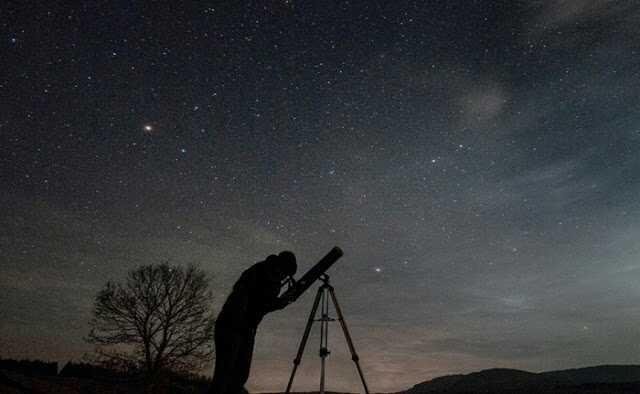
April 16: Phase of the New Moon
What is the new Moon phase? In this phase, the Sun-Earth-Earth position will be a straight line. However, because the orbited plane of the Moon is inclined about 5 degrees towards Earth, the total solar eclipse event does not occur. Instead, we can not see the Moon because its brightness is turning its back to Earth.
18 April: Moon Triangle-Venus-Pleiades
The thin crescent, Venusian planets, and Pleiades star clusters will form triangular formations on this date. To observe it, just enjoy the sunset first. Until the atmosphere of the sky began to darken because the sun had set, focus the view to the west.
If the view to the west is not blocked by clouds, tall buildings, or mountains, you will be lucky enough to see these three celestial bodies as in the sky map image below: 
April 23: Lyrid Meteor Rain
Prospect of observation this year: very good! This year, Lyrid meteor shower coincides with the early half-moon phase, which he will set at midnight. This will make the condition of the sky after midnight will be quite dark, so the dim meteors can be observed well.
Meteor showers are the incidence of meteoroids into Earth's atmosphere. This meteoroid comes from debris left by a comet along its former orbital path. For Lyrid, its origin is from comet C / 1861 G1 (Thatcher). Every April 23, Earth crosses the former comet path.
Lyrid actually takes place on the 19th to 25th April, but the peak is April 23, where an estimated 10 meteors per hour (with your notes observing it in a light pollution-free area). 
for more information you can see via link: http://www.infoastronomy.org/2018/04/april-2018.html?m=1
Congratulations @science01! You have completed some achievement on Steemit and have been rewarded with new badge(s) :
Click on any badge to view your own Board of Honor on SteemitBoard.
For more information about SteemitBoard, click here
If you no longer want to receive notifications, reply to this comment with the word
STOP